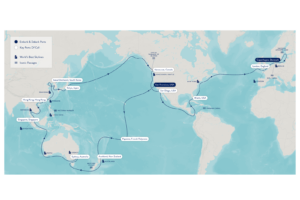Editor’s note: This is a recurring post, regularly updated with new information and offers.
If you’ve never visited London before, navigating its iconic Tube system can be either an adventure or a confused mess of Tube lines, fair types and labyrinthian stations.
You might not have initially thought so, but there’s a lot more to it than just getting to a station, hopping on a train and then exiting. Thankfully, TPG has your back, and we created this guide to the London Underground.
Let’s dive in.
Related: The 23 best hotels in London
Paying for the Tube and how to save money
First of all, let’s make sure the price is right.
There are many ways you can pay to travel around London via the Tube.
You can buy paper tickets from the ticket machines at each Tube, Overground and Docklands Light Railway station. One-way, return, daily and weekly travel cards are available. If you’re buying tickets for single journeys, you’ll probably spend more than you really need to if you take the Tube more than once.
The most convenient payment method, though, is to use your contactless payment card. Simply touch it on the yellow card readers found at Tube entrances and some platforms to pay for your ride.
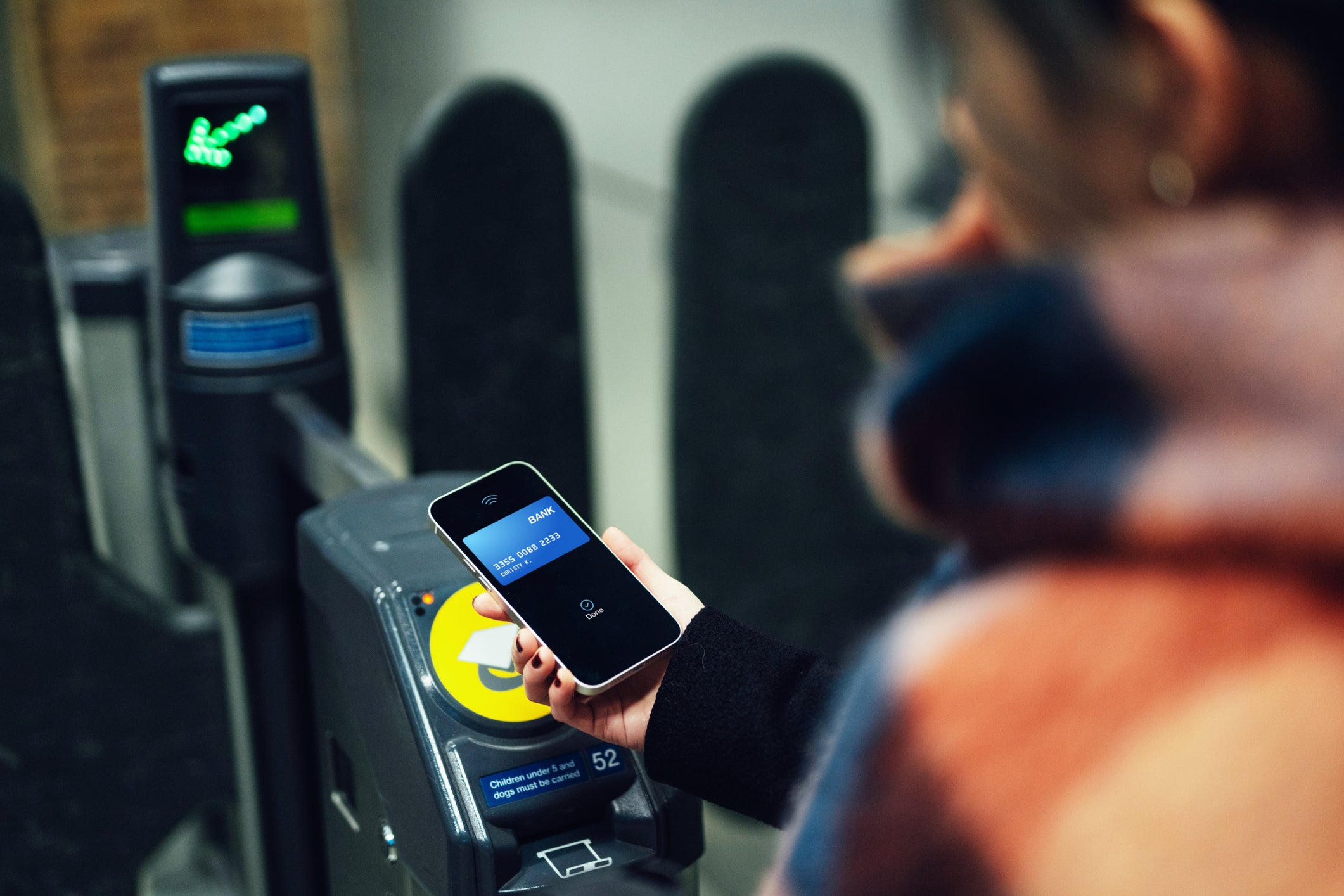
These card readers also work with prepaid Oyster cards sold at all Tube and Overground stations, plus most Elizabeth Line stations and select newsstands and visitor centers throughout London, for 7 British pounds ($8.86) each. If you choose to purchase and pay via an Oyster card, you can add money to the card using the ticket machines found inside Underground stations. You can then purchase daily or weekly travel cards covering various zones.
Regardless of how you pay for your ride, you’ll use the same process for confirming your payment. Use your phone (for contactless payments) or debit, credit or Oyster card to tap in and out at the barriers of your start and end stations. Remember that card readers aren’t always connected to gates and are sometimes free-standing, so make sure you locate one and tap in and out to avoid getting charged for traveling through all nine zones.
To see the full details and decide exactly which payment method is right for you, check out the Transport for London website.
Daily limits
If you use an Oyster card or contactless payment to pay for your Tube journey, there is a cap on how much you can be charged, depending on the zones you travel in or between.
Say, for example, you only travel within Zones 1 and 2. For a full day of travel via the London Underground in those two zones, you’ll pay 8.50 pounds (around $10.76).
You can view the prices for other zones on the TfL website.
Child discounts
All children under the age of 11 can travel on the London Underground for free, and children between 11 and 15 receive discounted fares (as outlined below). To ensure that you get a discount, you should talk to a member of the London Underground staff inside the station.
How much does travel on the London Underground cost?
The London Underground operates a peak and off-peak fare system. The amount you’re charged depends on which zones you’re traveling in or between.
Peak fares are charged Monday to Friday between the hours of 6:30 and 9:30 a.m. and from 4 to 7 p.m. Off-peak fares are charged at all other times and if you’re traveling from a station outside of Zone 1 into Zone 1 between 4 and 7 p.m. on weekdays.
Journeys on the Tube and the Elizabeth Line to and from Heathrow Airport (LHR) are always considered peak fares if you start, end or go through Zone 1.
| Zones traveled | Single ticket cash fare | Single ticket child (11-15) | Oyster and contactless cards (peak) | Oyster and contactless cards (off-peak) | Seven-day travel card |
| 1 | 6.70 pounds ($8.48) | 3.30 pounds ($4.18) | 2.80 pounds ($3.54) | 2.70 pounds ($3.42) | 40.70 pounds ($51.50) |
| 1-2 | 6.70 pounds ($8.48) | 3.30 pounds ($4.18) | 3.40 pounds ($4.30) | 2.80 pounds ($3.54) | 40.70 pounds ($51.50) |
| 1-3 | 6.70 pounds ($8.48) | 3.30 pounds ($4.18) | 3.70 pounds ($4.68) | 3 pounds ($3.80) | 47.90 pounds ($60.61) |
| 1-4 | 6.70 pounds ($8.48) | 3.30 pounds ($4.18) | 4.40 pounds ($5.57) | 3.20 pounds ($4.05) | 58.50 pounds ($74.02) |
| 1-5 | 6.70 pounds ($8.48) | 3.30 pounds ($4.18) | 5.10 pounds ($6.45) | 3.50 pounds ($4.43) | 69.60 pounds ($88.06) |
| 1-6 | 6.70 pounds ($8.48) | 3.30 pounds ($4.18) | 5.60 pounds ($7.09) | 5.60 pounds ($7.09) | 74.40 pounds ($94.14) |
Travel cards
Peak and off-peak travel cards are also available in the Tube stations’ kiosks. The cost of travel cards varies depending on the zones you travel in. Paying with an Oyster card or via contactless payment is usually cheaper.
An Anytime Day travel card can be used for the entire day that you purchase it until 4:30 a.m. the next day.
An Off-peak Day travel card is valid for an entire weekday from 9:30 a.m. — or any time on Saturdays, Sundays and public holidays — until 4:30 a.m. the following day.
How to read the London Tube map
The London Underground map is divided into nine zones. The center of London — along with its most popular tourist attractions and iconic hotels — is in Zone 1. The outer parts of the city are in Zone 9. The zones are serviced by 11 tube lines and a handful of other rail services identified by color.
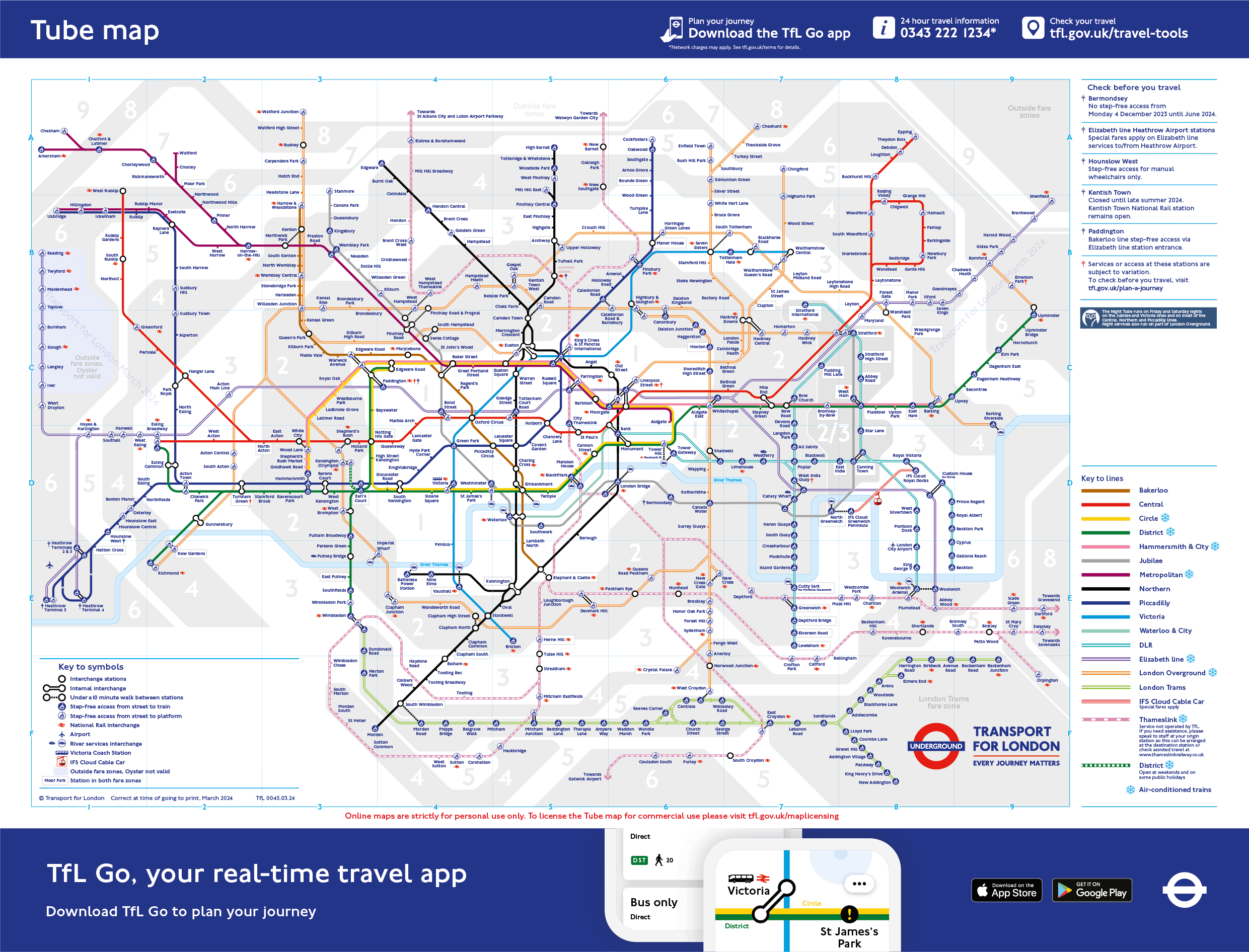
The London Underground lines are as follows:
- Bakerloo (brown): From Harrow & Wealdstone in northwest London to Elephant & Castle south of the River Thames
- Central (red): From West Ruislip in west London to Epping in east London
- Circle (yellow): From Hammersmith to Edgware Road and then back to Edgware Road in a loop around central London
- District (green): From Upminster in east London to Richmond in south London
- Hammersmith & City (pink): From Hammersmith to Barking in east London
- Jubilee (gray): From Stanmore to Stratford in east London
- Metropolitan (maroon): From Aldgate to Amersham
- Northern (black): From Edgware in the northern suburbs to South Wimbledon in southwest London
- Piccadilly (dark blue): From Cockfosters via Hammersmith to Heathrow Terminals 1, 2, 3, 4 and 5; the Piccadilly Line has two branches, which split at Acton Town
- Victoria (light blue): From Walthamstow Central in north London through central London to Brixton
- Waterloo & City (turquoise): From Bank to Waterloo Station
Though not technically Tube lines, you’ll also find the following rail routes on the Tube map:
- Overground (orange — double stripe): From Watford Junction in the northwest to Croydon in the south and from Barking in the east of London to Richmond and Wandsworth in the southwest
- Docklands Light Railway (turquoise — double stripe): From Bank in the City to Lewisham in east London and Bank to Woolwich Arsenal; there are further routes from Tower Gateway to Beckton, Stratford to Lewisham or Canary Wharf, and Stratford International to Woolwich Arsenal
- Elizabeth Line (purple — double stripe): From Reading and Heathrow in the west to Shenfield and Abbey Wood in the east
Taking the Tube to Heathrow Airport
Depending on where you’re traveling from, the Tube or Elizabeth Line will likely be your cheapest and most direct route to Heathrow Airport.
You can learn more about the best ways to reach Heathrow here.
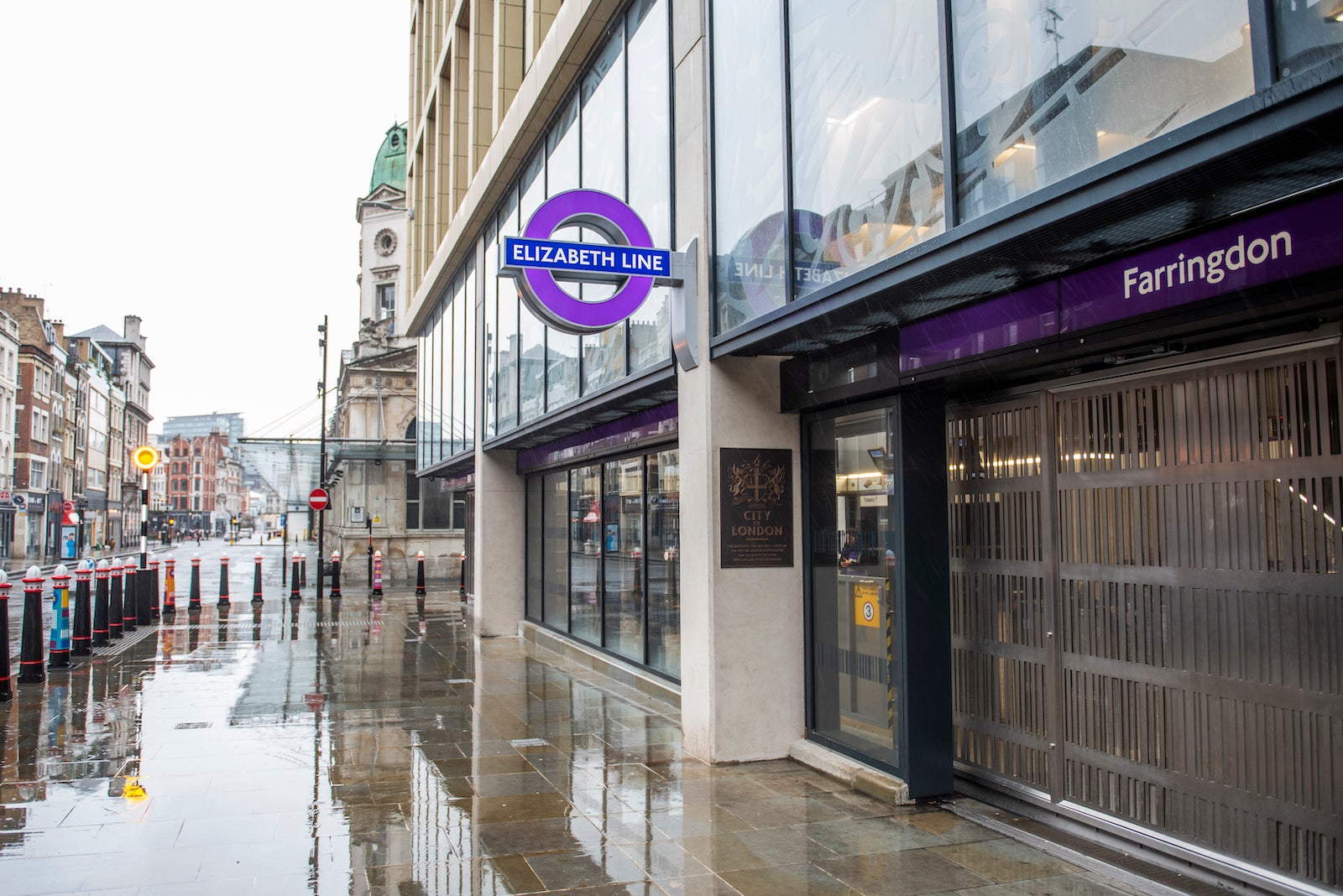
While there’s extra space on the Piccadilly Line for suitcases, trains on other lines aren’t always as accommodating. Either way, traveling with multiple pieces of luggage at peak times can make for a stressful and awkward journey for you and those around you.
It’s not always possible to get to Heathrow without getting on the Tube during peak times. If possible, try to leave earlier to avoid rush hour and have a far more comfortable journey.
How to plan your trip
TfL provides a range of free Tube maps that are available in most Tube stations and some small shops to help you plan your journey.
You can also use TfL’s journey planner. Add in your start and end destinations, and the site will work out the nearest Tube stations and what changes you may need to take. The site will also suggest bus routes if they’re faster, and it’ll advise on journey times.
You can filter its suggestions to only include buses if you wish to avoid the Tube; you can also filter for routes that are accessible, routes near taxi ranks or routes that have the fewest changes or least amount of walking.
In terms of apps, many Londoners tend to use Citymapper (iOS/Android) or Google Maps (iOS/Android), both of which will provide you with up-to-date Tube suggestions, walking routes and bus options.
How early does the Tube run?
The London Underground’s opening times can differ depending on the line you want to take and where you’re starting your trip. Generally, though, Tube trains begin operation around 5 a.m. from Monday to Saturday, with slightly reduced operating hours on Sundays.
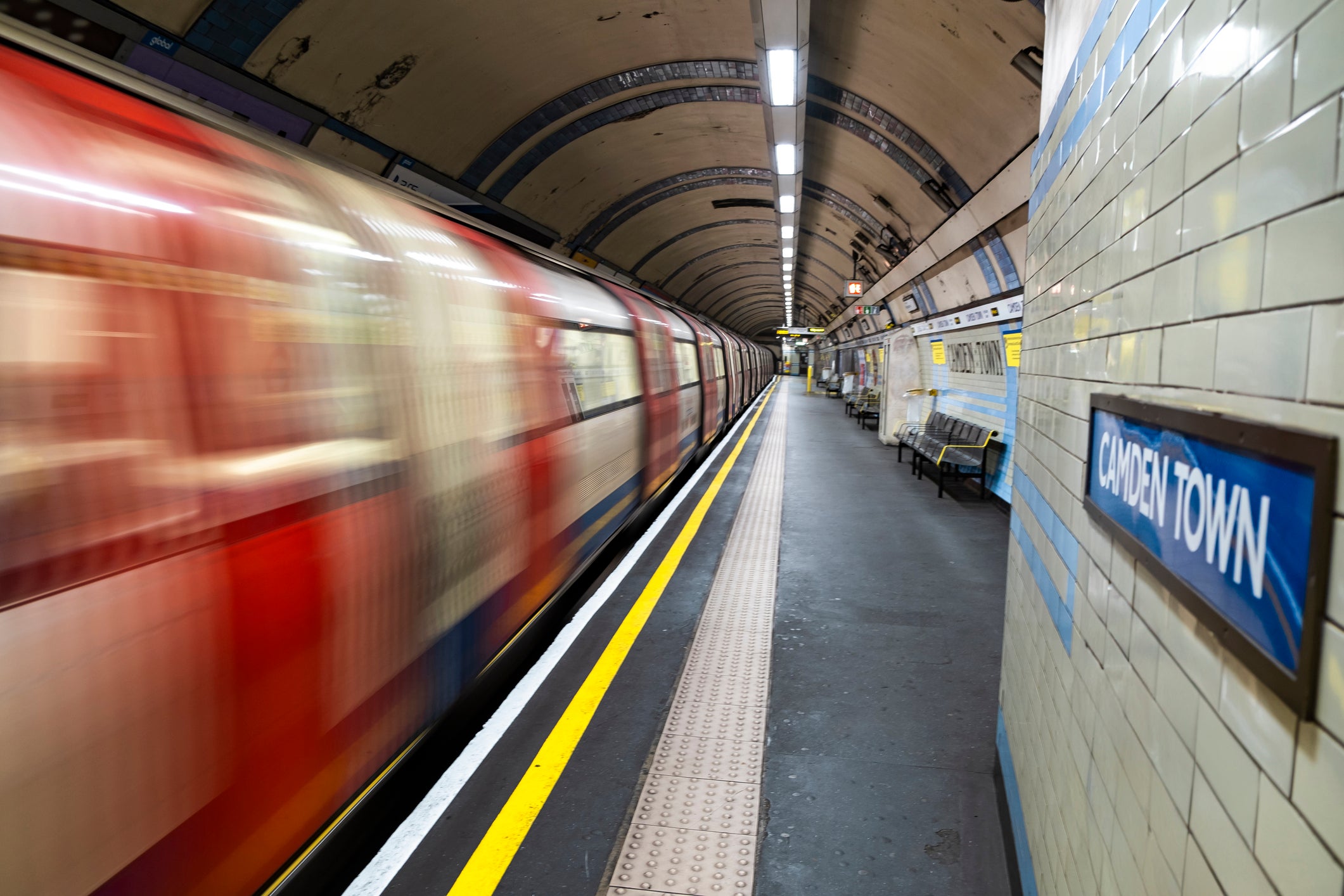
How late does the Night Tube run?
On Friday and Saturday nights, you can ride the Night Tube when the Central, Jubilee, Northern, Piccadilly and Victoria lines run for 24 hours. Additionally, the London Overground operates a 24-hour service on these days between New Cross Gate and Highbury & Islington.
The Night Tube is charged at off-peak rates.
The quickest route might not be the obvious one
If you’re not used to London, you might think you need to take the Tube to get anywhere. The Tube is your best bet for longer journeys in and out of the city. However, shorter journeys in central London will likely be quicker on foot.
When planning your journeys, the TfL website has a handy box to help you determine which routes are quicker to walk.
By walking shorter routes, you’ll not only save time but will also breathe in less thick, soupy air. The views are guaranteed to be an improvement, too.
Travel etiquette on the London Underground
Polite behavior when traveling on the London Underground can pretty much be simplified into three main rules.
Escalator etiquette
Perhaps the most important rule of Tube stations is to stand on the right on the escalators. This allows those in a rush to glide down the escalators in a flash to avoid waiting an extra minute for the next train.
Mindful Tubing
Everyone getting the Tube has somewhere to be and is likely in a rush. Letting all passengers get off your carriage before boarding will enable a smoother, quicker and more pleasant journey for everyone.
Additionally, don’t hog seats if someone in need, such as elderly people, pregnant women or people with disabilities, would benefit more than you by sitting down. Checking if someone needs your seat will go a long way in making someone’s journey, if not their entire day, better.
As for rides during busy commuting hours, remember that squishing as tightly as possible into the area closest to the doors doesn’t benefit anyone. Move down the train. It makes for a more comfortable, less sweaty journey for everyone.
Queueing
In general, queueing is somewhat of a national sport for Brits. We do it anywhere and everywhere, and anyone who fails to queue correctly will receive passive-aggressive eye rolls and tuts from all who witness it.
This also applies to the Tube, whether you’re waiting to get through the barriers, waiting to get on or waiting for the stairs, escalators or elevators to leave the station. Save yourself the glares and cranky tuts of fellow passengers by falling into line.
Bottom line
Love it or hate it, London would come to a standstill without the Tube. Whether it’s your first time in the capital or you’re a seasoned Londoner, the above tips will serve you well. Remember, above all else, to stand to the right.


